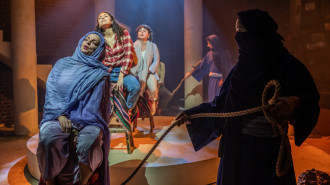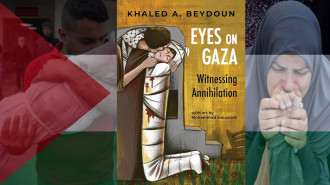

Since the start of Israel's war on Lebanon, concern for the country's historic sites has grown, especially as the violent air and ground offensive that began on September 23 has claimed more than 2,000 lives.
As more experts and practitioners denounce the destruction and appeal to the international community, The New Arab examines the sites that have been destroyed so far, reactions to the attacks, current efforts to protect these sites, and how these attacks demonstrate that Israel is committing urbicide in Lebanon.
Sites destroyed so far
On October 6, Israel struck a cultural heritage site near the ruins of the ancient Roman Temple of Bacchus in Baalbek, a well-known city in Lebanon's Bekaa Valley. As of October 29, Israel launched another attack, resulting in 60 deaths and 58 injuries.
Then, on October 9, Saint George’s church in the village of Dardghaya was destroyed in a strike that also killed two rescue workers. The Ayyubid shrine in Baalbek-Douris was also damaged in a nearby strike.
The destruction continued on October 14, with the world witnessing the obliteration of the 200-year-old souks of Nabatieh, once a lively marketplace filled with fruit and vegetable vendors, goldsmiths, grocers, and clothing and soap stores.
Fast forward to October 16, and the attacks continued with strikes that almost entirely destroyed the Prophet Benjamin shrine in Mhaybib and mosques in several other border villages.
On this day, Israel also targeted Tebnine Castle, causing significant damage to its outer walls. The castle was originally built by the Crusaders in 1104, when the Tebnine region was part of the Kingdom of Jerusalem.
The latest assault occurred on October 28, when Tyre — home to Phoenician and Roman ruins and a popular summer destination — was struck for the second time, following an initial attack on October 23 that had been hit seven times.
Reactions to the attacks
The attacks on these historic sites have sparked widespread fury.
Commenting on the destruction of Nabatieh, Jad Dilati, a human rights researcher from the town, told The New Arab: “Nabatieh is unrecognisable. My family's house is still standing, but we've lost many of our friends and acquaintances.”
Jad added, “By targeting the souks, the Israelis are destroying our history and culture. This was a very important place for us, where we could buy everything we needed for cheaper than elsewhere, but above all we came here to talk and socialise with our friends and acquaintances — it had great sentimental value for the whole town.”
He remembered the studio where his grandfather, father, and then himself had their photos taken. "It was damaged during the 2006 war (which pitted Hezbollah against the Israeli army for a month) but is now totally destroyed.”
Mona Harb, professor of urban studies at the American University of Beirut and co-founder of the Beirut Urban Lab, also commented on the Nabatieh destruction: “The destruction of the Nabatieh souk was deliberate, with the intention of annihilating the city's economic structure and the collective memory of its inhabitants.”
Mona added, “There were no military installations in the souks of Nabatieh that would legitimise these attacks. Yet, targeting the souk was not a mistake: the aim was to strike at the economic and socio-cultural fabric of southern Lebanon.”
In an email statement to The New Arab, the IDF refuted these claims and stated that it “operates in strict accordance with international law. It must be emphasised that Hezbollah unlawfully embeds its military assets into densely populated civilian areas and cynically exploits civilian infrastructure for terror purposes.”
Commenting on the destruction of Lebanon’s UNESCO heritage sites, Joanne Bajjaly, founder of Biladi, a Lebanese association specialising in the protection of archaeological and cultural heritage, said: “These sites are protected under international law, and to attack them would be tantamount to a war crime. Bombings near these sites, even if they are not directly hit, can damage them with vibrations, debris and air pollution.”
Joanne added, “The site of Baalbek, the largest Roman temple in the world, was built by the Romans to resist earthquakes — but not Israeli missiles! What's more, they have been weakened by years of economic crisis and lack of resources.”
For several years, Biladi's teams have been providing training for the Lebanese army, private museums, and the General Directorate of Antiquities to protect endangered works.
Together with the Ministry of Culture, they have affixed 22 Blue Shield crests to archaeological sites, which are intended to protect them under international law in accordance with the 1954 Hague Convention.
“But we are facing an enemy who does not respect the law, and who deliberately bombs heritage sites. We can protect the works from indirect damage, but if the Israelis target them with a direct strike, there's nothing we can do,” Joanne highlighted.
Current efforts to protect Lebanon's heritage sites
To mitigate the risk of damage from shelling, several private museums have sought Biladi's services since Israel’s attacks began, including the Museum of Contemporary and Modern Art (MACAM).
Situated in the green hills above Byblos, one might expect the museum's 400 works of art to be safe from the war. However, this was not the case when several Israeli missiles struck the nearby village of Maaysra, just two kilometers away.
“Everything shook; we thought we were the target; it was terrifying,” Ibrahim al-Freij, the janitor, told The New Arab.
Ibrahim added, “We heard the screams of the victims and smelled the burning flesh from the other side of the valley.”
In response to the fear among the museum employees, the management team quickly put protective measures in place. “There's little chance of us coming under direct attack, but there can be indirect damage, vibrations, shards of glass, from a nearby strike,” Diala Nammour, the museum's director and a member of the Lebanese committee of the International Committee of Museums, explained.
“So, we put all our ceramics in a safe place, laid several works on the floor so they couldn't fall, and boarded up some windows in the archive room.
“But at the same time, we wanted to remain open to the public, by reservation, and keep most of the artworks visible. A group of students came to visit the museum, and they were touched to see these works in their fragility and to understand how important it is to protect them,” Diala added.
Visiting the museum now leaves a surreal impression: amidst installations of modern art, showcases are empty, and statues lie on the floor or on sofas.
“We have a responsibility to our works, not just for their market value, but because they are unique and can never be rebuilt or replaced. At the same time, we want to continue to offer the Lebanese a space where they can breathe,” Diala shared.
Absence of state support
Despite current efforts to protect Lebanon’s heritage from further attacks, many critics point to insufficient support from the state.
Diala notes that the Lebanese state has been weakened by years of crisis and is largely absent during times of war.
She tells The New Arab: “The lack of support from the ministries pushes us as Lebanese citizens to take responsibility for ourselves and try to support ourselves as best we can. It brings out a bit of our humanity and a sense of solidarity and compassion.”
Currently, Lebanon's historical heritage is not included in the government's emergency plan, and no measures have been taken to protect major national sites. The National Museum in Beirut, which was closed and its works protected by concrete crates during the civil war (1975-1990), remains open.
“The state has not yet declared a state of war; public institutions are still open, and so preventive measures are not yet being applied, even though the equipment and technical know-how are available,” Joanne explained.
“We're waiting for a political decision, whereas in wartime, everyday counts,” she added.
The only tangible action so far has been a letter from the Lebanese Minister of Culture, Mohammad Wissam Mortada, to UNESCO Director-General Audrey Azoulay, condemning the Israeli airstrikes near the Roman temples of Baalbek as a “flagrant violation” of international conventions and urging UNESCO to “take urgent measures and tangible actions to protect this historic site.”
Neither the Lebanese Ministry of Culture nor the General Directorate of Antiquities responded to The New Arab’s repeated requests to comment.
Understanding urbicide
With the attacks on Lebanon’s heritage sites, the term 'urbicide' has gained attention, especially as entire areas of Lebanon are being heavily bombed, including homes and essential infrastructure.
At present, the border villages of Mhaybib, Yaroun, and Aita al-Shaab have been almost completely destroyed by the Israeli army after intense fighting with Hezbollah.
By raising Israeli flags among the ruins, Israeli soldiers are trying to create an empty buffer zone to protect Israel's northern border.
Mona views these events as a clear example of urbicide, a term she uses to describe the intentional destruction of both the physical surroundings and the community life of civilians for purely military objectives.
“The people of southern Lebanon are very committed to their land, their villages, and their historical heritage. They have developed a strong and lively bond with archaeological sites and frequent them daily,” Mona explained.
“Losing this link is extremely traumatic for a population that is deprived of its environment and landmarks,” she added.
Jad also shared his views: “Israel is trying to break the organic link between the Lebanese and their land, their community, and their heritage. Their aim is to break their morale so that they turn against Hezbollah and accept Israeli conditions to end the war.”
As more than one million Lebanese have been displaced and 2,500 killed by Israel’s invasion, South Lebanon’s heritage remains uncertain.
Currently, there are increasing fears that the IDF may expand its operations to the area around the Awali River, close to the southern city of Saida, endangering numerous historical sites in the process.
Philippe Pernot is a French-German photojournalist living in Beirut. Covering anarchist, environmentalist, and queer social movements, he is now the Lebanon correspondent for Frankfurter Rundschau and an editor for various international media
Follow him on X: @PhilippePernot7







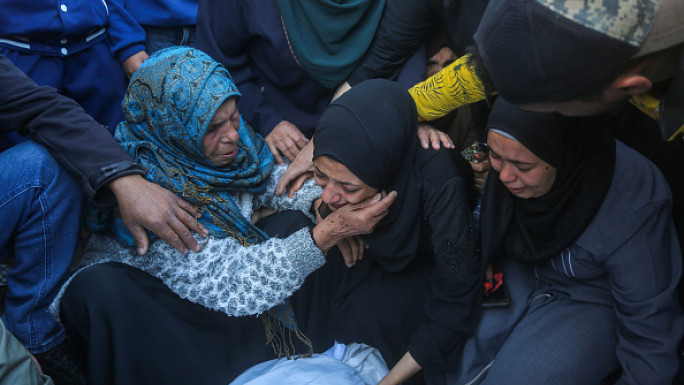

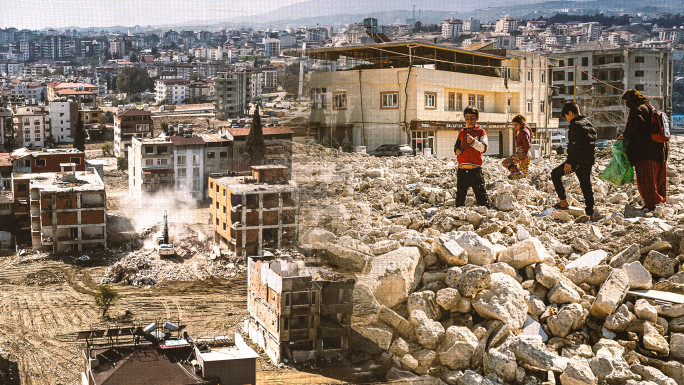
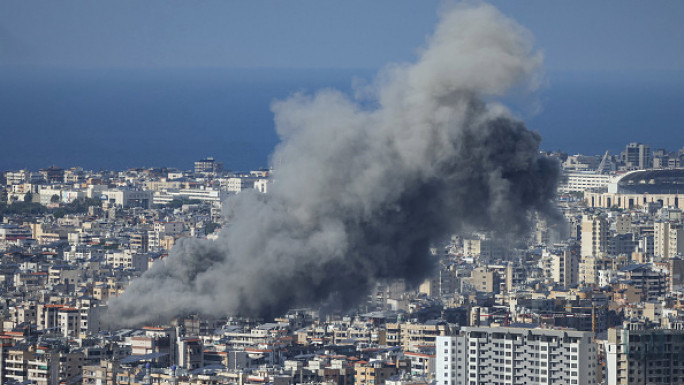
 Follow the Middle East's top stories in English at The New Arab on Google News
Follow the Middle East's top stories in English at The New Arab on Google News
